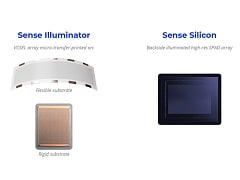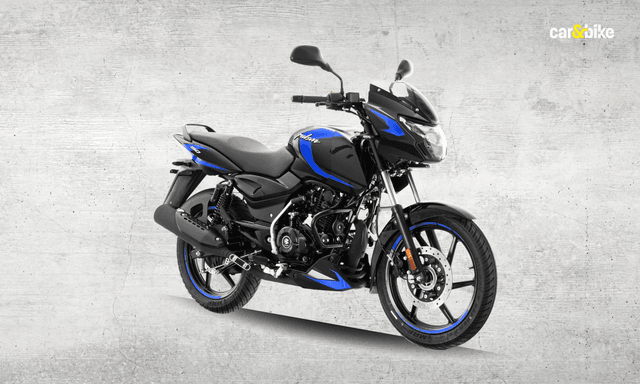Sense Photonics Reveals New LiDAR System With 200m Range For Autonomous Cars

Sense Photonics announced today that it has achieved an industry-first by successfully demonstrating 200-metre detection with its proprietary global shutter flash LiDAR system. According to the company, the system leverages the company's proprietary emitter and SPAD sensor technologies. Sense's camera-like architecture enables the first high-resolution, eye-safe, global shutter flash LiDAR that can detect 10 per cent reflective targets at 200 meters range in full sunlight outputting tens of millions of points per second. Global shutter acquisition sets a new standard in the long-range LiDAR industry by removing the need for complex motion blur correction while allowing pixel-level, frame-by-frame fusion with RGB camera data.
Hod Finkelstein, CTO, Sense Photonics, said, “We have delivered what industry experts thought was impossible due to our 940nm wavelength, and have created a revolutionary new architecture with the Sense Illuminator, Sense Silicon, and our state-of-the-art signal processing pipeline to miniaturize the data output. Our LiDAR systems will solve the shortcomings that OEMs, Tier 1 suppliers, and Robotaxi companies have been dealing with in competing LiDAR technologies.”
Given that the company is targeting this technology for use in autonomous cars, it is geared specifically for mass-market automotive adoption. And unlike legacy LiDAR technologies, Sense's flash architecture eliminates the need for fine alignment between emitter & receiver, maintaining sensor calibration and depth accuracy during shock and vibration. Additionally, the architecture is designed as a platform to allow for customer-specific product variations with a simple change in optics and the first to be able to provide both short- and long-range capabilities from the same architecture.
Shauna McIntyre, CEO, Sense Photonics. “Sense pushed the boundaries of performance by designing application-specific VCSELs and SPADs that take advantage of the economics of wafer-scale fabrication.”
Customer evaluation systems for this technology are being finalised and will be available mid-2021 to meet current demand requirements, with start of production being planned for late 2024.
Trending News
 3 mins readWill The Kawasaki W230 Be Launched In India?
3 mins readWill The Kawasaki W230 Be Launched In India?
Latest News
 Jaiveer Mehra | Dec 26, 2025India-Spec New Renault Duster Teased Ahead Of Jan 26 DebutA new teaser video provides brief glimpses of the upcoming all-new SUV which seems to get some notable styling differences over its global sibling.1 min read
Jaiveer Mehra | Dec 26, 2025India-Spec New Renault Duster Teased Ahead Of Jan 26 DebutA new teaser video provides brief glimpses of the upcoming all-new SUV which seems to get some notable styling differences over its global sibling.1 min read Jaiveer Mehra | Dec 26, 2025New Mahindra XUV 7XO Teaser Confirms 540 Degree CamerasLatest teaser video confirms the SUV will get the new 540 degree camera set-up from the XEV series as well as a few other features.1 min read
Jaiveer Mehra | Dec 26, 2025New Mahindra XUV 7XO Teaser Confirms 540 Degree CamerasLatest teaser video confirms the SUV will get the new 540 degree camera set-up from the XEV series as well as a few other features.1 min read car&bike Team | Dec 24, 2025Updated Bajaj Pulsar 150 Launched At Rs 1.09 Lakh: Gets LED Lighting, New ColoursThe Pulsar 150 is offered in three variants with prices topping out at Rs 1.15 lakh (ex-showroom).2 mins read
car&bike Team | Dec 24, 2025Updated Bajaj Pulsar 150 Launched At Rs 1.09 Lakh: Gets LED Lighting, New ColoursThe Pulsar 150 is offered in three variants with prices topping out at Rs 1.15 lakh (ex-showroom).2 mins read Janak Sorap | Dec 24, 20252026 Kawasaki Ninja 650 Launched at Rs 7.91 LakhWith E20 compliance, the 2026 Ninja 650 receive a new colour update and a premium price tag.1 min read
Janak Sorap | Dec 24, 20252026 Kawasaki Ninja 650 Launched at Rs 7.91 LakhWith E20 compliance, the 2026 Ninja 650 receive a new colour update and a premium price tag.1 min read Jafar Rizvi | Dec 24, 2025Listed: Car Manufacturers That Will Hike Prices From January 2026Based on the announcements made so far, the price increase across car models is expected to range between 2 and 3 per cent.3 mins read
Jafar Rizvi | Dec 24, 2025Listed: Car Manufacturers That Will Hike Prices From January 2026Based on the announcements made so far, the price increase across car models is expected to range between 2 and 3 per cent.3 mins read car&bike Team | Dec 24, 2025KTM RC 390 Discontinued Globally, Remains On Sale In IndiaThe KTM RC 390 will continue to be offered on sale in India, where it is manufactured and there’s still strong demand for the model.2 mins read
car&bike Team | Dec 24, 2025KTM RC 390 Discontinued Globally, Remains On Sale In IndiaThe KTM RC 390 will continue to be offered on sale in India, where it is manufactured and there’s still strong demand for the model.2 mins read
 Jafar Rizvi | Dec 24, 2025MG Windsor EV 38 kWh Long-Term Report: IntroductionThe Windsor EV has joined our garage, and before it settles into daily duty, I took it out to get a sense of what living with an electric car is like.4 mins read
Jafar Rizvi | Dec 24, 2025MG Windsor EV 38 kWh Long-Term Report: IntroductionThe Windsor EV has joined our garage, and before it settles into daily duty, I took it out to get a sense of what living with an electric car is like.4 mins read Seshan Vijayraghvan | Dec 23, 20252026 Kia Seltos Review: Formula Is Spot On, But Is The Timing Right?The 2nd-gen Kia Seltos has arrived, but it has the challenge of facing strong rivals like the Victoris and Sierra. The question is simple - Does it still have what it takes?9 mins read
Seshan Vijayraghvan | Dec 23, 20252026 Kia Seltos Review: Formula Is Spot On, But Is The Timing Right?The 2nd-gen Kia Seltos has arrived, but it has the challenge of facing strong rivals like the Victoris and Sierra. The question is simple - Does it still have what it takes?9 mins read car&bike Team | Dec 26, 2025Tata Punch EV Long-Term Second Report: Highway Performance, Pros & ConsAfter a week of living with the Tata Punch EV Long Range—including a proper Mumbai-Nashik highway test—we've learned what this little electric SUV is really made of.1 min read
car&bike Team | Dec 26, 2025Tata Punch EV Long-Term Second Report: Highway Performance, Pros & ConsAfter a week of living with the Tata Punch EV Long Range—including a proper Mumbai-Nashik highway test—we've learned what this little electric SUV is really made of.1 min read Seshan Vijayraghvan | Dec 22, 20252026 Tata Harrier & Safari 1.5 Hyperion Review: By The Power Of Petrol!The new Tata Harrier and Safari petrol packs a new 1.5-litre TGDI Hyperion engine, but is it an ideal alternative to the diesel version?7 mins read
Seshan Vijayraghvan | Dec 22, 20252026 Tata Harrier & Safari 1.5 Hyperion Review: By The Power Of Petrol!The new Tata Harrier and Safari petrol packs a new 1.5-litre TGDI Hyperion engine, but is it an ideal alternative to the diesel version?7 mins read Bilal Firfiray | Dec 19, 2025Maruti Suzuki e-Vitara Review: Worth The Wait?After a long wait, the first-ever electric Maruti Suzuki is here. It’s the e-Vitara, and it comes with a few promises. But arriving this late, is it worth the wait? Or is it a case of too little, too late?9 mins read
Bilal Firfiray | Dec 19, 2025Maruti Suzuki e-Vitara Review: Worth The Wait?After a long wait, the first-ever electric Maruti Suzuki is here. It’s the e-Vitara, and it comes with a few promises. But arriving this late, is it worth the wait? Or is it a case of too little, too late?9 mins read































































































































